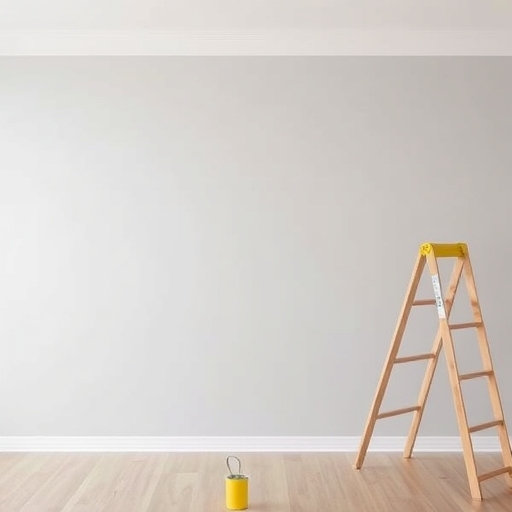How to Clean Walls With Flat Paint
Flat paint is a popular choice for interior walls due to its matte finish, which can help hide imperfections and create a warm, inviting atmosphere. However, cleaning flat paint can be a bit challenging compared to glossier finishes. In this article, we’ll explore effective methods for cleaning walls with flat paint, tips to prevent damage, and common questions regarding maintenance.
Understanding Flat Paint
Before diving into cleaning methods, it’s essential to understand what flat paint is and why it behaves differently from other types of paint.
What is Flat Paint?
Flat paint, also known as matte paint, has a non-reflective finish that absorbs light rather than reflecting it. This characteristic makes it excellent for hiding wall imperfections but also makes it more susceptible to stains and marks.
Pros and Cons of Flat Paint
| Pros | Cons |
|---|---|
| Hides wall imperfections | More susceptible to stains |
| Creates a warm ambiance | Difficult to clean |
| Variety of colors available | Can dull over time |
| Generally less expensive | Not as durable as glossy finishes |
When to Clean Your Walls
Regular maintenance can help keep your walls looking fresh. Here are some signs that it’s time to clean your flat-painted walls:
- Visible stains or marks: Food splatters, fingerprints, or crayon marks may become noticeable.
- Dust accumulation: Dust can settle on walls, especially in high-traffic areas.
- Allergens: If you have allergies, cleaning walls can help reduce dust and allergens in your home.
- Soft microfiber cloths or sponges
- Bucket of warm water
- Mild dish soap or a gentle cleaner
- Baking soda (for tough stains)
- White vinegar (optional)
- Painter’s tape (for protecting edges)
- Step ladder (for high walls)
- Ventilation: Ensure good airflow in the room by opening windows or using fans.
- Protective Gear: Wear gloves to protect your hands, especially if using cleaning solutions.
- Test First: Always test any cleaning solution on a small, inconspicuous area before applying it to the entire wall.
- Start at the top of the wall and work your way down.
- For textured walls, consider a vacuum with a brush attachment.
- Dampen a cloth with warm water and wring it out.
- Wipe the wall gently, starting from the bottom and moving upward to avoid streaks.
- Mix a few drops of mild dish soap in a bucket of warm water.
- Dampen a cloth in the solution, wring it out, and gently wipe the wall.
- Rinse the wall with a clean, damp cloth to remove soap residue.
- Ingredients: Baking soda and water.
- Instructions:
- Ingredients: White vinegar and water.
- Instructions:
- Use a small amount of dish soap directly on the stain.
- Let it sit for a few minutes before wiping with a damp cloth.
- Dampen a cloth with rubbing alcohol and blot the stain gently.
- Avoid scrubbing, as this can damage the paint.
- Use a clean cloth and a bit of baking soda to gently scrub the area.
- Rinse with a damp cloth afterward.
- Avoid Abrasive Materials: Steer clear of scrub brushes or abrasive sponges that can scratch the paint.
- Limit Water Exposure: Excessive water can cause the paint to peel or bubble. Always use a damp cloth rather than soaking the wall.
- Use Gentle Cleaners: Choose non-toxic, gentle cleaners that won’t strip the paint.
Preparing to Clean Your Walls
Before starting the cleaning process, gather the necessary materials and tools.
Materials Needed
Safety Precautions
Cleaning Techniques for Flat Paint
General Cleaning
For routine maintenance, a gentle approach is often sufficient.
1. Dusting: Use a microfiber cloth or a dusting tool to remove dust and cobwebs.
2. Damp Wiping:
3. Mild Soap Solution:
Spot Cleaning Stains
For more stubborn stains, use the following methods:
Baking Soda Paste
1. Mix baking soda with water to form a paste.
2. Apply the paste to the stained area using a soft cloth.
3. Gently rub in circular motions.
4. Wipe the area with a damp cloth and let it dry.
Vinegar Solution
1. Mix equal parts of white vinegar and water in a spray bottle.
2. Spray the solution onto the stain and let it sit for a few minutes.
3. Wipe with a damp cloth, then rinse with plain water.
Dealing with Tough Stains
For tough stains like grease or ink, you may need a more specialized approach.
1. Grease Stains:
2. Ink Stains:
3. Crayon Marks:
Preventing Damage to Flat Paint
Cleaning flat paint requires a gentle touch. Here are some tips to prevent damage during cleaning:
FAQs About Cleaning Flat Paint Walls
Can I use a magic eraser on flat paint?
Magic erasers can be effective for removing stains but may also remove some of the paint. Use them sparingly and test on a small area first.
How often should I clean my walls?
Generally, cleaning your walls every 6-12 months is sufficient for most households, but high-traffic areas may need more frequent cleaning.
Will cleaning damage the paint?
If done correctly, cleaning should not damage the paint. Always use a soft cloth, mild soap, and avoid excessive scrubbing.
What if the stains won’t come off?
If stains persist despite cleaning, you may need to consider touch-up painting or repainting the wall for a fresh look.
Conclusion
Cleaning walls with flat paint can be a manageable task when approached with the right techniques and tools. Regular maintenance, gentle cleaning methods, and a little patience will keep your walls looking fresh and inviting. By understanding the unique properties of flat paint and employing effective cleaning strategies, you can maintain the beauty of your home’s interior for years to come.
With the tips and methods outlined in this article, you can confidently tackle any cleaning challenge that your flat-painted walls may present. Happy cleaning!

